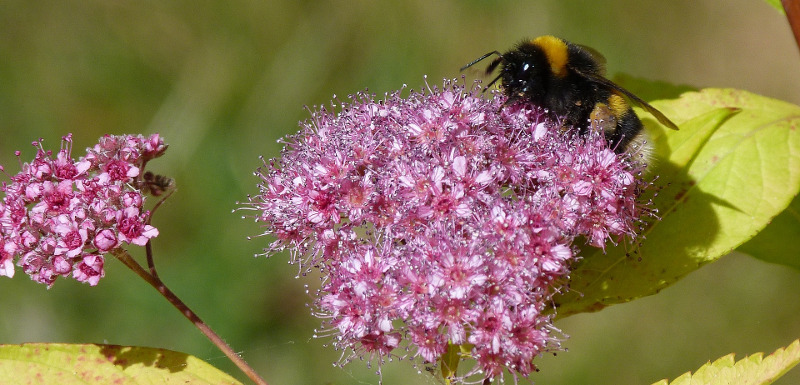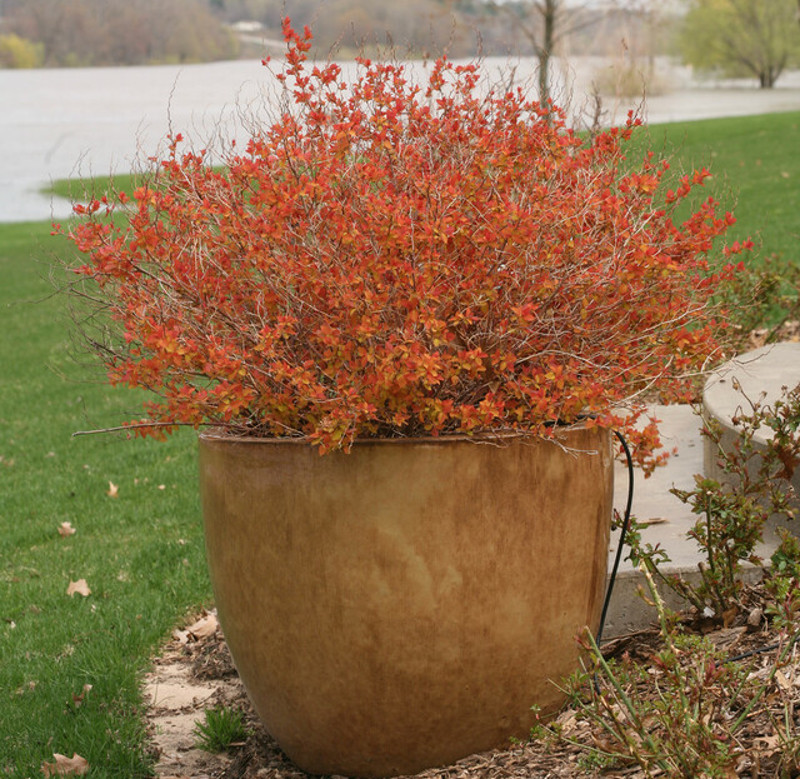Spirea or spiraea is a genus with about 80 to 100 species. These shrubs are native to North America and Asia. The small flowers of spiraea are clustered together and come in several colors including pink, white & sometimes purple. The blooms attract bees, butterflies, hummingbirds and many other pollinators.
Spirea, also known as meadowsweet, grows easily in most garden locations. it can be used in a mass planting, ornamental garden border, and foundation planting. The plants require partial sun to full sun, or at least 4 hours of direct sunlight per day, and well-drained soil. Most spireas are winter hardy to growing zones 3 to 9. These deciduous bushes typically stay compact at 2 to 5 feet tall and wide.

Planting Spirea
Spirea can be planted in the spring or fall. Plant in a location that drains well and receives 4-6 hours of sunlight each day. Space spirea plants 2 to 15 feet apart, depending on the expected mature width of the plant. Dig a hole slightly deeper than the root ball and 2 times wider. Loosen the soil around the roots and place in the hole with the top of the root ball slightly above soil level. Fill the hole with soil and pat down slightly. Water well and mulch to retain moisture.
Watering Spirea
Newly planted Spireas should be watered well until established. The soil should be kept moist but not soggy. Once established, this plant is drought tolerant and only needs watering when rainfall is rare or in drought conditions. It is best to water deeply to encourage healthy roots. This bush does not like wet feet, so avoid oversaturating the soil.

Fertilizing Spirea
Spireas are not heavy feeders. To prevent leggy growth, it is best to not over-fertilize. At the time of planting, apply a balanced fertilizer. In early spring, apply a controlled-release fertilizer (10-10-10) according to instructions. This will provide enough nutrients for the entire growing season.
Pruning Spirea
Prune summer blooming Spirea bushes in late winter or early spring. This can be done to remove dead/broken branches or to maintain a desired shape. Spirea shrubs are fast growers. Another lighter pruning after bloom in spring or early summer will promote new blooms and reinvigorate foliage growth.
Spring flowering varieties bloom on old growth from the previous year and need to be pruned right after flowering. If it becomes severely overgrown, cut it to the ground to rejuvenate the shrub.
Caring For Spirea in Pots
Dwarf varieties of Spirea can be grown in containers. The container you choose should have drainage holes, as this plant likes moist, well-drained soil. Plants that sit in soggy soil can develop root rot or other diseases. Place the container in a location that gets 4-6 hours of full sun each day.
Fertilize potted Spirea shrubs in early spring and again in early summer with a slow-release, granular plant fertilizer or a water-soluble liquid fertilizer formulated for potted plants. Container-grown Spirea will require more frequent watering. Provide water when the top 2 inches of soil has become dry.

Winter Care for Spirea
Spirea bushes are winter hardy in USDA zones 3-9. Frost hardy, they require minimal care during the cold season. In the fall, give the plant more water to hydrate the roots and prepare for the first hard freeze. Mulch around the base of the plant to the roots from freeze-thaw cycles.
Late winter pruning helps encourage new growth in the spring. Container-grown plants should be moved to a sheltered location for the winter. This keeps the plants out of harsh winter weather.
Common Spirea Care Questions
What Are The Growth Rate For Spirea?
Spireas will grow take off and grow very quickly, and in optimal conditions can reach their full size in just a matter of years.
Are Spirea Invasive?
Japanese Spirea, or Spirea Japonica, are now considered to be invasive in the mid-Atlantic region of the United States.
Are Spirea Annual Or Perennial?
Spirea is a deciduous bush, meaning they lose their leaves each fall/winter, but new leaves will appear in the spring when the weather warms.
Why My Spirea Leaves Turning Brown And Yellow?
Browning leaves on Spirea may be caused by Verticillium Wilt, which presents in addition to drying, curling, or wilting leaves. Yellowing leaves can be the result of over-watering or sufficient watering and poor drainage of the moisture from the soil around the roots.
Have a question about Spirea? Fill out the form below and we will try and get back to your question as soon as possible. We may even feature your question in this article to help other gardeners!
 |
Author Chris Link - Published 07-02-2021 |
